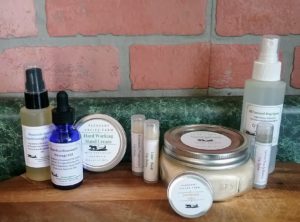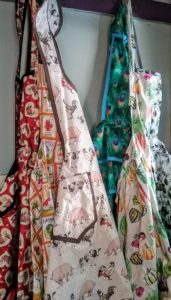One of the great things about making a living on your homestead is earning an income doing things you love. But there are some things to keep in mind to successfully transition from hobby to work. If you want your hobby to be a successful business venture, you need to treat it as a business! Here are three things to consider when taking your hobby to the next level:
1. Business Plan
This sounds scary, but it can be pretty basic. Where do you plan on selling your finished items? There are many options to consider. If you already have a farm stand or farmer’s market table where you are selling things, you can add new items to your offerings easily. You can also sell on Etsy, Ebay, Amazon or any number of established online retailers. You can advertise for in-person sales through classified ads. These can be online, like Craigslist, or a local newspaper. There are even apps that let you snap photos and sell from your phone. Another option is space in a consignment shop, where they work on bringing in customers in exchange for a fee/commission of your sales. All of these have pros and cons, so it’s up to you to weigh what will work best for the items you’re creating.
It’s wise to look into local regulations when forming your business plan. If you are going to sell food (other than fresh produce), you’ll most likely need to get a license and have an inspected kitchen. Other items may require a sales tax license. Know how much paperwork and expense it will require before you start. If you’re selling at a farmer’s market, read the fine print as to what you can sell. Each market has different regulations regarding non-food or processed items, so make sure your items fit into the market guidelines before you invest time and money into something that can’t be sold there.

I turned a hobby of creating my own body care items into a successful part of our farm stand and Etsy businesses.
2. Record Keeping
Record keeping is important for any business. If you want to transition from doing something as a hobby, a big change in mindset comes when you start to keep good records. Keep track of what you buy as supplies, where they were purchased, and how much they cost. It can be difficult to price your first items, but if you know what it cost you to make them, you’ll have a good starting place.
I have spreadsheets for the ingredients I use for my body care items, for example. Not only does it help me to set a profitable price tag on the lip balms, lotions, and other items, but it helps me to keep the quality consistent. Keeping track of the retailer (and individual seller on sites like eBay or Amazon) makes it easy for me to reorder the exact same product. Before I kept good records, I had forgotten where I ordered my Shea butter. While I found a source for organic, raw Shea butter, the color was a much deeper yellow than the previous jar. This changed the color of my hand cream, as I don’t use any colorants. Keeping track of my suppliers results in a more consistent finished product. It also helps me to avoid buying inferior ingredients. If I purchase something and find it doesn’t perform up to my standards, I make sure to enter it in my records, even if I return it. I note that it was not a good fit and the reason why. This way I can avoid making the same mistake twice.
In addition to the raw ingredients, I have a separate spreadsheet for the packaging. I need to know the cost of the spray bottle, dropper, or tin to price effectively as well. For these things, not only do I track the cost of the purchase and supplier, but I break it down into cost per individual unit. It can be very surprising! While plastic containers look cheap, sometimes they are actually more expensive than glass or metal. Or, you may find that more attractive packaging is only a few cents more. It’s often worth the investment if that will help you to sell more of your items.
It’s also a good idea to keep track of how much you make, and how much you sell. Knowing what flavors/colors/styles/etc are selling well and which are not can help you focus what you are doing. Data on what sells well can guide you when you are brainstorming new products or variations. Don’t forget to track any custom orders as well. Some of our most popular Etsy items started out as a special request that we then offered to the public. Good records on the raw material will also make it easier to calculate cost for these requests.

The aprons I make to sell reflect my personal style.
3. Style
When you’re creating or growing things for yourself or your family, you focus on what you like. As you transition from hobby to business, it can be tricky to decide how to focus. It’s never a bad idea to investigate current trends- what is the hot new veggie to offer as a bedding plant? What colors are in style this season?
One of my current hustles involves sewing aprons and tote bags. These are things I love and find useful, and I truly enjoy taking vintage patterns, pairing them with modern fabrics, and creating something beautiful. It’s easy to be overwhelmed walking into a store or looking through an online catalog. There are so many choices! I focus on what speaks to me. Not everyone will love the patterns and colors I select, as they tend to be farm & food oriented, and have a vintage or country feel. I’m just not a modern, urban girl and my style reflects that. But it’s better to have a recognizable style than to be all over the map. While not everyone will be drawn to any given style, you’ll be better able to connect with a group of customers with tastes similar to your own. Also, not every item will be a commercial success. Some items will just not sell, and it’s better to be stuck with something that you enjoy having and will put to use.











1 Comment
Great article, thanks!